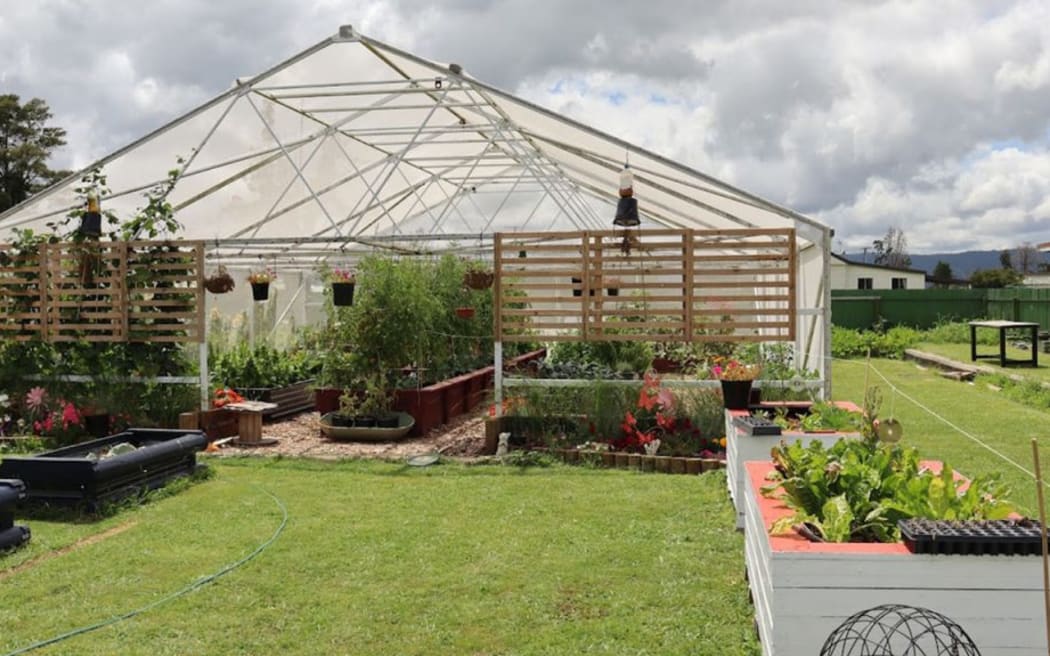A disused bowling green in the rural community of Waharoa has become a fresh food oasis, thanks to a team of University of Auckland researchers.
The site is now home to a greenhouse full of fruits and veggies that the local community is free to come and pick as they please.

Local residents are welcome to help themselves to freshly harvested fruit and vegetables at this edible landscape in Waharoa. Photo: Univeristy of Auckland
Projects like this are just scratching the surface of what is possible with planting food in our public spaces, says lead researcher Dr Barbara Ribeiro from the Faculty of Creative Arts and Industries.
She says Waharoa was chosen as a location because it's an area where people face significant deprivation.
“That comprises a range of values that span across education, criminality, housing. We wanted to do it somewhere where it would be really helpful.
"Unfortunately, one of those dimensions [of deprivation] is health.
“Diet-related diseases are skyrocketing in the region and elsewhere in the world, as well. But here in New Zealand, especially among Māori and Pasifica people, diet-related diseases are quite high.”
As well as reconnecting people with healthier dietary choices, one of the goals of the project is to encourage pollinator biodiversity, Dr Ribeiro says.
On the ground, the Māori community group Kaitiaki Trap'n' Train Trust is driving the project, she says, with support from the local council which charges a peppercorn rent for the land.
People in the community are getting behind the initiative, too.
“The narratives that we collected from the interviews, they're quite playful, joyful... [People are] grateful for having access to those places and the kinds of experiences that they provide.”
The greenhouse serves an educational role, too.
“Many people are really keen to go there with their kids so that they can show their kids what a strawberry looks like, rather than taking them to the supermarket.”
Climbing beans, courgettes, watermelons, celery, carrots, tomatoes and edible flowers are also thriving on the site, Dr Ribeiro says.

